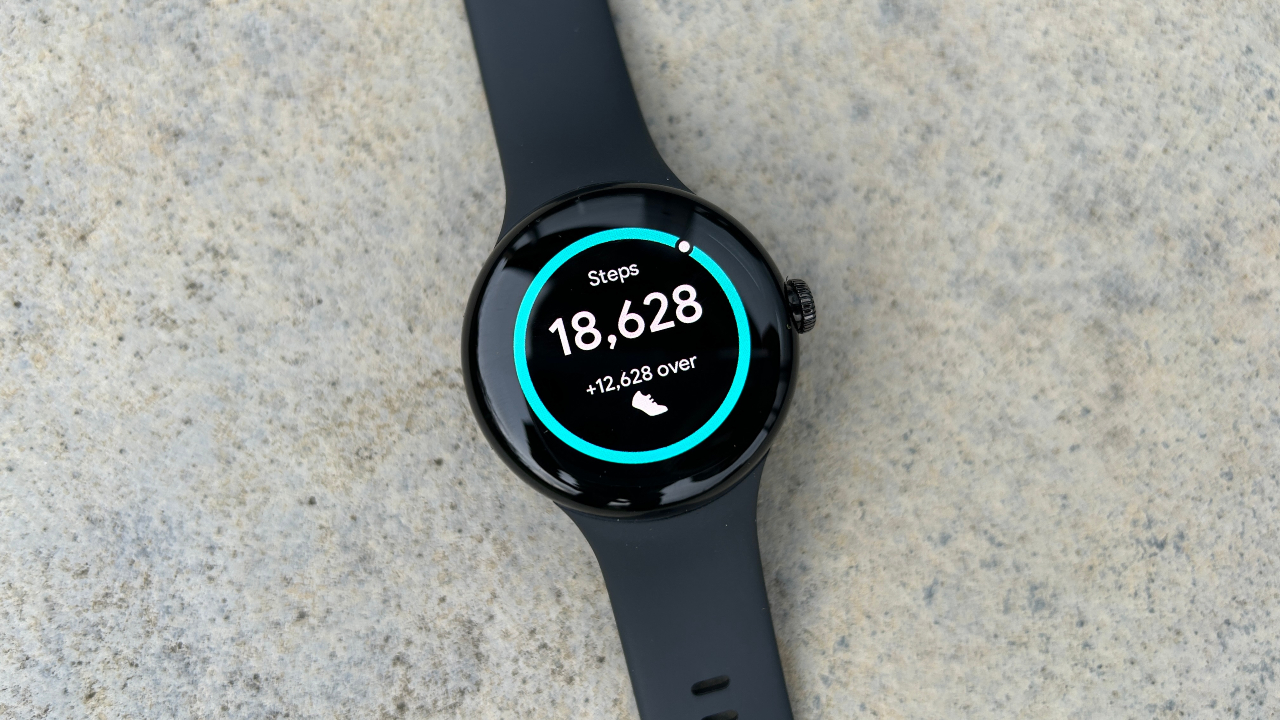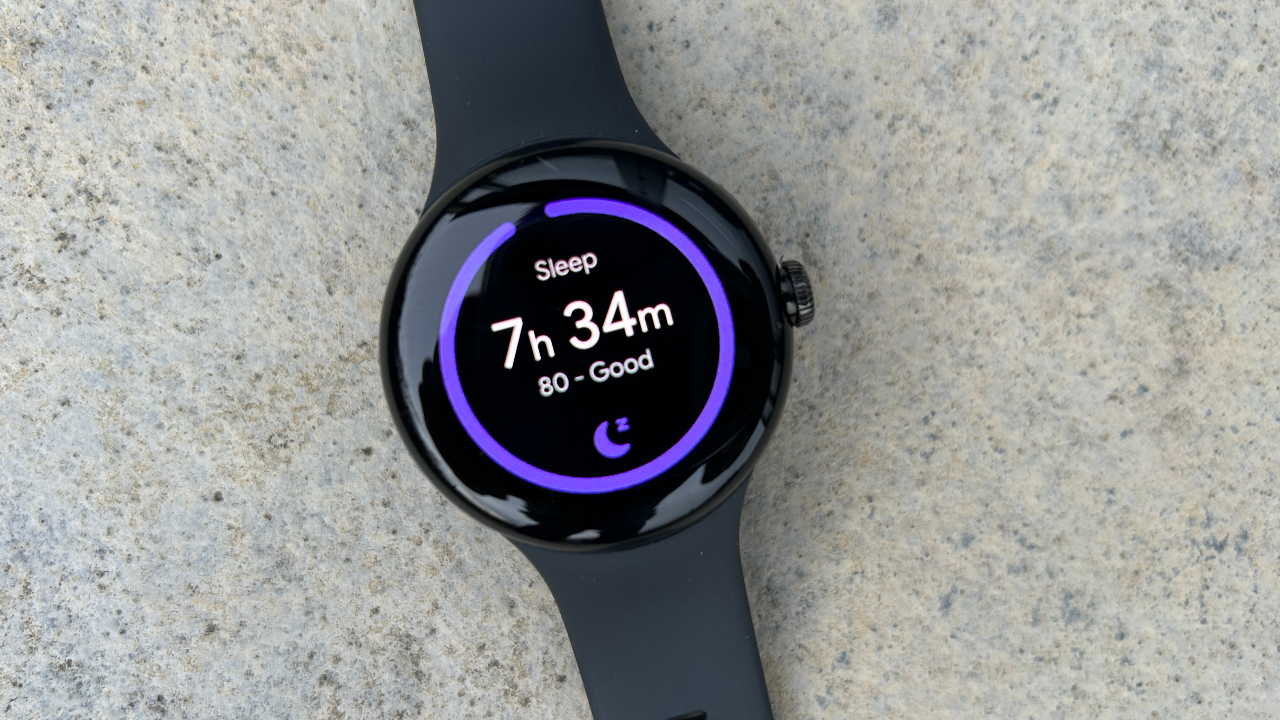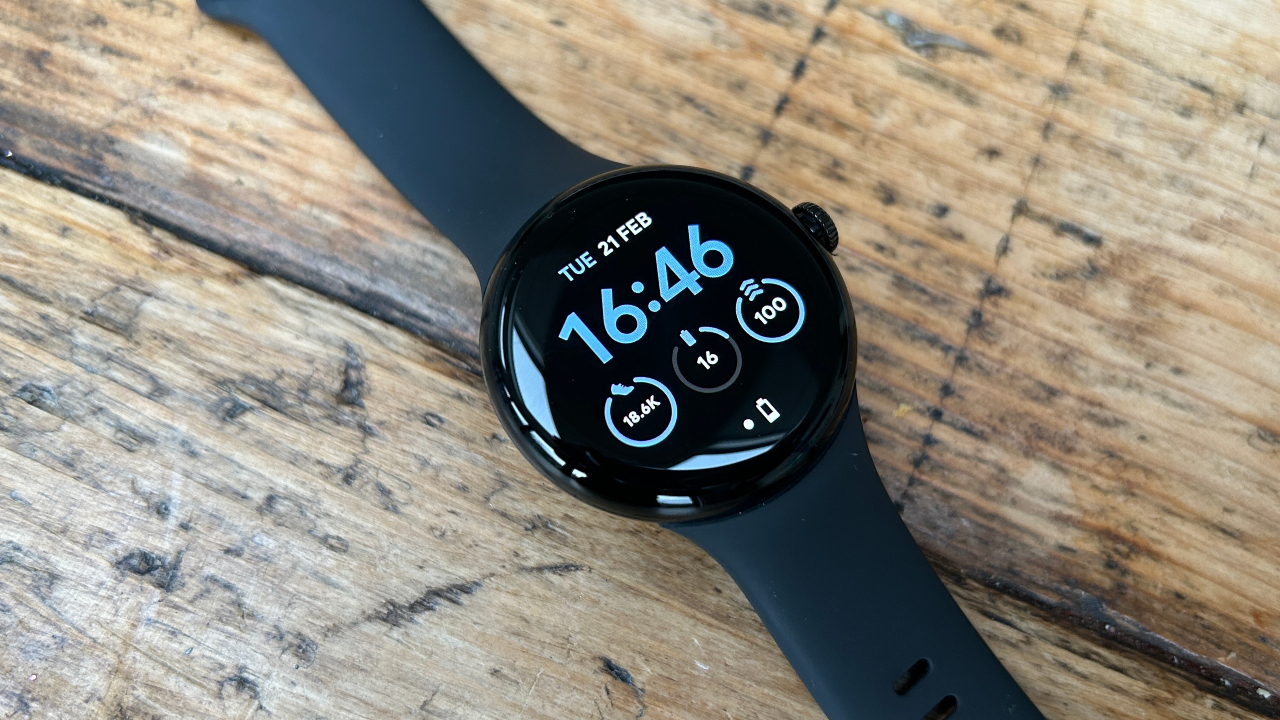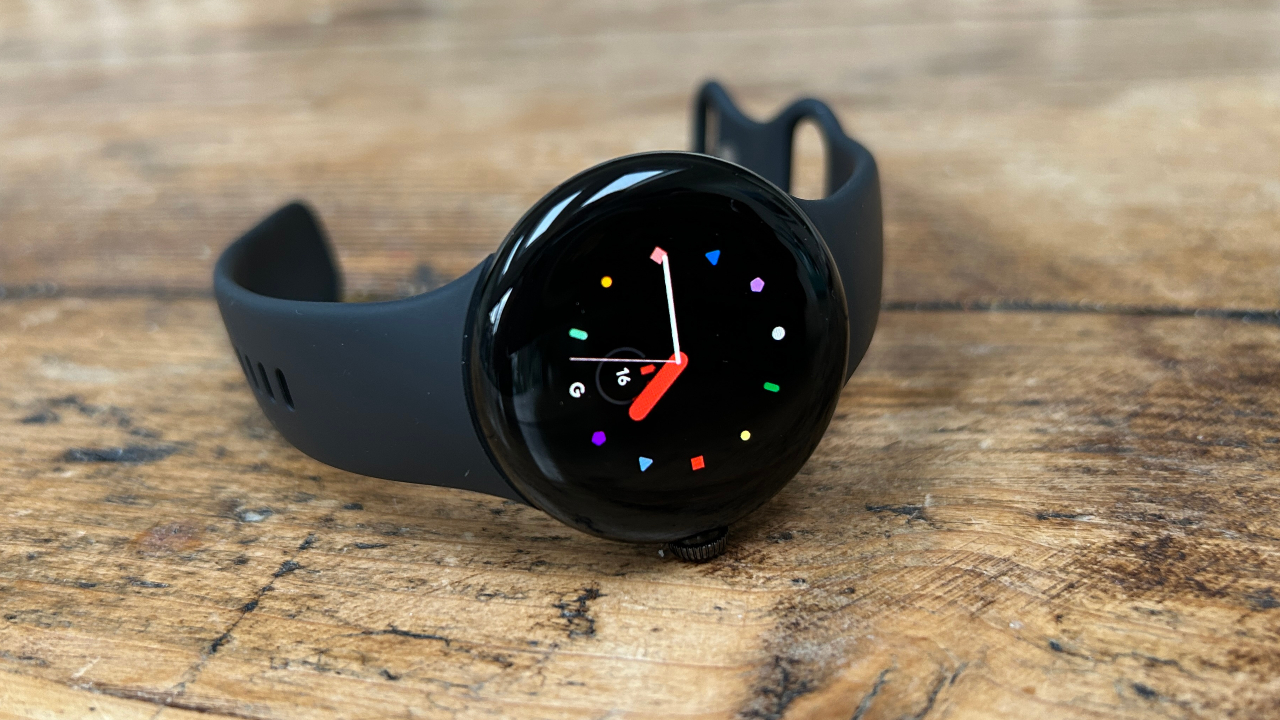Our Verdict
The Google Pixel Watch looks good and runs smoothly, yet its features feel dated and, in some cases, lacking compared with the best smartwatches. The battery life is poor, even by smartwatch standards, and the sports tracking is merely OK.
For
- Small, with an attractive design
- Impressive interface
- Fitbit fitness tracking
Against
- Large bezels
- Basic sports tracking
- Battery life
You can trust Coach
The long-awaited Google smartwatch has arrived and it comes with Fitbit’s health tracking to bolster its chances of ruffling feathers at Apple and Samsung. Unfortunately, the Google Pixel Watch falls short of the standards set by the best fitness smartwatches, like the Apple Watch Series 8 and Samsung Galaxy Watch 5.
While the Pixel Watch is my favourite Fitbit device and shows some potential – and offers the smoothest Wear OS user interface I’ve come across – it feels basic, and the battery life is even worse than an Apple Watch.
Google Pixel Watch Review: Price And Availability
The Google Pixel Watch launched in October 2022 and costs $349 in the US and £339 in the UK, a price that undercuts the Apple Watch Series 8 ($399/£419) but is more expensive than the Samsung Galaxy Watch 5 ($279.99/£269) and the Fitbit Sense 2 ($299.95/£269.95). There is a cellular version of the watch that costs $399/£379.
How I Tested The Watch
I have been wearing the Google Pixel Watch for the past two weeks, tracking all my activity, and sleep, along with several workouts including outdoor and indoor runs, strength and yoga sessions. During that period I have worn it at the same time as the Apple Watch Series 8, as well as the Garmin Epix 2 and Enduro 2 sports watches. I have also tested most of Fitbit’s smartwatches, many Wear OS watches, and every Apple Watch to date.
Design And Hardware

I like the overall design of the Pixel Watch, which is small and sleek and sits comfortably against the wrist. The 1.6in (41mm) case has a stainless steel frame and comes in black, silver or champagne gold, with a 1.2in AMOLED screen and a glass front that curves right around the sides. Along with the rotating dial, there is a thin button to navigate around the watch.
There is a large black bezel that runs around the display, which is a little ugly, though well disguised by the array of dark watch faces loaded on the watch. A bigger concern is that the screen is exposed and easy to knock or scratch as a result.
The display is bright and the touchscreen is responsive with little lag, and the Wear OS interface is streamlined and easy to navigate – much more so than on any other Wear OS watches I’ve tested.
Sign up for workout ideas, training advice, reviews of the latest gear and more.
Switching bands is less easy, although it seems like a simple process of pressing the quick-release button on the band. I fussed at this for several frustrating minutes before getting the right size band on. It’s not a great concern, though it is a far cry from the easy process of swapping bands on the latest Garmin and Apple watches.
The Pixel Watch is water resistant to 50m and uses GPS, GLONASS, Galileo and BeiDou satellite systems for outdoor activity tracking. It has an altimeter and blood oxygen sensor, though the latter isn’t enabled yet, and it can take ECG readings.
You need an Android phone to use the Pixel Watch. It won’t link up with an iPhone.
Activity And Sleep Tracking
Google owns Fitbit, so it makes sense to outsource the activity tracking to Fitbit given its experience in the area. The Fitbit apps on the Pixel Watch look after all your daily activity stats, as well as sleep and sports tracking.
For activity and sleep tracking, this is a good thing. The Fitbit app provides engaging steps and calories burned tracking, and encourages you to move every hour. The Active Zone Minutes target is as useful as it is on all Fitbit devices, motivating you to log 150 minutes of moderate activity a week.

Sleep tracking is another strong area, providing a detailed look at your night's rest and readings that feel accurate to me. You will need a Fitbit Premium subscription to get the most detailed insights into your sleep, along with unlocking other features like a daily readiness score. That costs $9.99/£7.99 a month or $79.99/£79.99 a year, an annoying extra cost to unlock your own data on what is already an expensive watch, but you do get six months free when you buy the Pixel Watch.
Sports Tracking
Fitbit takes care of sports tracking on the Pixel Watch, though you can also visit the app store for third-party options like Strava or Adidas’s Runtastic app. For basic sports tracking the watch does a solid job with a variety of sports profiles, but it doesn’t have the depth of stats and customisation you get from a proper sports watch.
I’ve also yet to find a top-quality sports app in the Google Play store, whereas there are several excellent options in the Apple app store, like WorkOutDoors or iSmoothRun. As a keen runner the stats and customisation available on the Pixel Watch fall short of what I want, but for other sports where I take a more casual approach the native Fitbit app is acceptable.
The watch automatically tracks your time in different heart rate zones to help you log progress towards your active zone minutes goals, and it’s easy to see which heart rate zone you are in during workouts. Though the accuracy isn’t always spot-on.
HR And GPS Accuracy
The heart rate tracking on the Pixel Watch has been a mixed bag for me. I’ve been testing it against a chest strap heart rate monitor to check the accuracy, though at times I haven’t needed the strap to tell that the Pixel Watch was way off. This is generally the case during runs, where the watch often locked on to my cadence rather than my heart rate, giving readings that were too high as a result.
During other sports, and throughout the day and night, the heart rate tracking has been better, usually within a few beats of a chest strap during strength workouts in particular. Overall it’s about par for the course for optical heart rate monitors, but the running performance was disappointing. You also can’t connect an external heart rate monitor if you want greater accuracy.

The GPS accuracy was an improvement, and an upgrade on my experience with Fitbit watches – though it still left me underwhelmed. It takes time to lock on to a GPS signal at the start of outdoor activities, and you have to pause a run to give it a chance to do this since it will just start tracking automatically in the native app. I found it was generally inaccurate in the tracking it produced for the first kilometre of each run, but after that it improved.
If you’re a serious runner or cyclist you’ll be looking at other devices and using a chest strap to get the most accurate results, and cheaper watches from the likes of Huawei and Amazfit actually offer a better experience for accuracy and sports tracking. The tracking on the Pixel is fine, but there’s room for improvement if Google wants to compete with Apple in this area.
Battery Life
Google says the Pixel Watch will last up to 24 hours, which is a number you’ll only get close to if you turn the always-on screen off. With the screen on and tracking 30-60 minutes of outdoor exercise each day, the watch struggled to make it through a day, and it was stressful trying to find time to charge it so it was available to track my sleep.
This is subpar battery life even for a smartwatch: the Apple Watch Series 8 and Samsung Galaxy Watch Active reliably last me a day and night with the always-on screen on, even though the Apple Watch is listed as only having 18 hours of battery life. And it’s a lot less than the battery life you get from Fitbit’s smartwatches, which last four or five days.
Smart Features

The Pixel Watch offers integration with Google’s apps, like Maps and Wallet. Navigating using Google Maps is easy (as long as you have your phone nearby), and you can select between walking and cycling routes.
There are several music apps available for the Pixel Watch, which comes with a six-month subscription to YouTube Music. There is a Spotify app for the watch, and if you have a Premium account you can download music to the watch to listen to offline.
The Pixel Watch is a proper smartwatch and a step up on anything you get from sports watches, as well as devices from the likes of Huawei and Amazfit, which don’t provide access to the Play Store and its useful apps.
Is The Google Pixel Watch Worth It?
Google’s first attempt at a smartwatch is fine, but it doesn’t get close to the experience offered by the Apple Watch Series 8, and is less developed than the Samsung Galaxy Watch range, even if I prefer the design and user interface of the Pixel Watch.
Sportier users will get more from an Apple Watch if they have an iPhone – or the Amazfit T-Rex 2 or the Garmin Venu 2 if they don’t, though those using one of the latter pair will lose out on smart features compared with the Pixel Watch.
The Google Pixel Watch is the best device available with Fitbit’s activity tracking and much smarter than the Sense 2, though the Sense 2 is cheaper and has a skin temperature sensor.
Overall, it’s a disappointment that the Google Pixel Watch doesn’t meet the standards of today’s smartwatches, when it has had ample time to check out rivals during its lengthy development.

Nick Harris-Fry is a journalist who has been covering health and fitness since 2015. Nick is an avid runner, covering 70-110km a week, which gives him ample opportunity to test a wide range of running shoes and running gear. He is also the chief tester for fitness trackers and running watches, treadmills and exercise bikes, and workout headphones.

